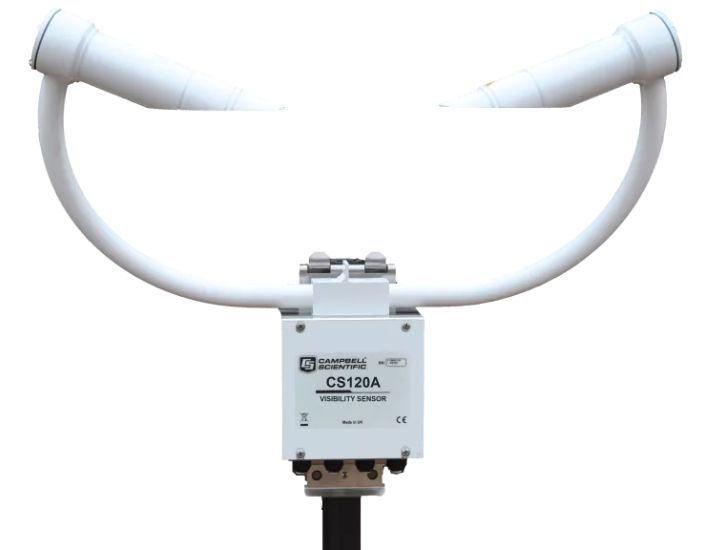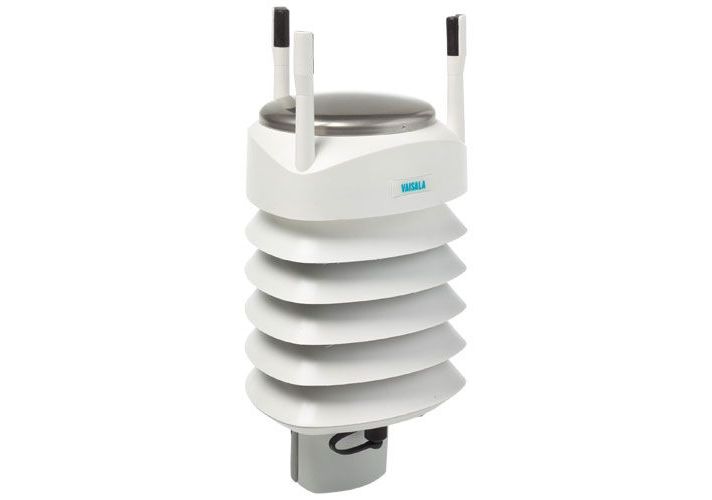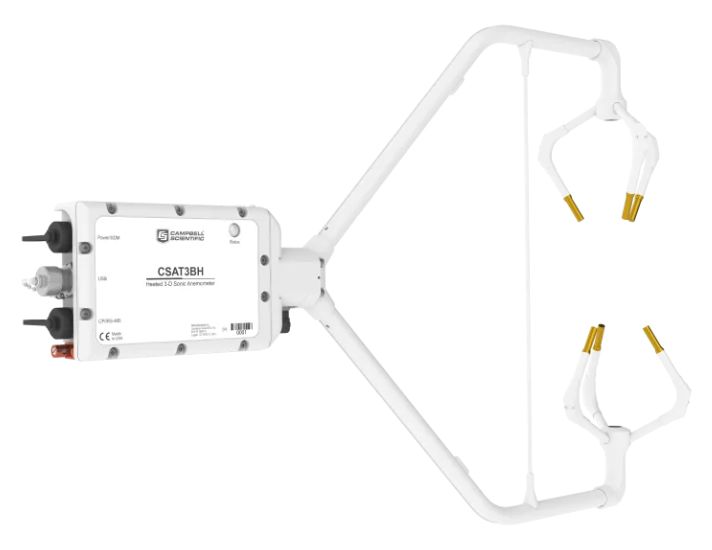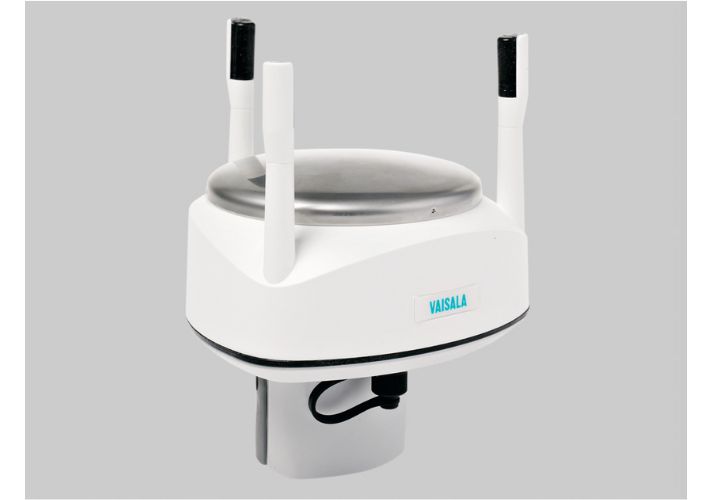Fully compliant with Decree 48/2020/NĐ-CP
With over 10 years of experience in providing comprehensive monitoring solutions, Reecotech Company is proud to introduce the meteorological and hydrological monitoring station system in the port area, fully meeting the requirements of Decree 48/2020/NĐ-CP.
Our monitoring station system is highly accurate, easy to operate, saves time and maintenance costs, ensures continuous and efficient operation, and is reliable for maritime operations, contributing to the protection of the marine environment.
Product
Wave and Water Level Measurement

RangeFinder Wave and Water Level Radar Sensor
- Measure sea level and ocean waves
- Measure the height and length of ocean waves
- Monitor the current state of the ocean.

Pressure Based Waves
- Measure pressure, tide level, tidal pressure
- Measure the temperature of the water environment
Visibility

CS120A Atmospheric Visibility Sensor
The CS120A uses tried-and-tested, infrared forward-scatter technology, and it uses the proven 42° scatter angle to report meteorological observable range (MOR) for fog and snow in the range of 5 to 75,000 m (16.4 to 246,063 ft). It combines a high specification with a very competitive price. The CS120A is ideal for stand-alone applications or in combination with automatic weather stations in road, aviation, solar-energy, and wind-energy environments.
For aviation applications, users can be assured that the CS120A complies with UK CAA, FAA, and ICAO guidance and meets or exceeds all recommendations and specifications. (This includes CAP437, CAP670, and CAP746.)
The CS120A is certified by Deutscher Wetterdienst as suitable for use to control wind turbine obstruction light systems as specified by 506/04, General Administrative Rules for the Identification of Aircraft Obstructions.

Visibility Sensor PWD50
- Accurate, traceable measurement of prevailing visibility
- Versatile and easy to install
- Easy to integrate
- Robust and dependable
- Weather-proof design reduces need for maintenance
Wind

WXT536 Multi-Parameter Weather Sensor
- Low power consumption is ideal for battery powered systems
- No moving parts for durability and long maintenance intervals
- Easy integration with 3rd party data collection platforms

WXT533 Rainfall & Wind Sensor
- Low power consumption is ideal for battery powered systems
- No moving parts for durability and long maintenance intervals
- Easy integration with 3rd party data collection platforms

CSAT3BH Heated, 3-D Sonic Anemometer with Integrated Electronics
The CSAT3BH is ideal for stations that are deployed in cold climates. The easy-to-use CSAT3BH sonic anemometer features smart heating that delivers just the right amount of heat to keep the instrument free of ice and snow, enabling continuous and reliable measurements in cold environments. The CSAT3BH is designed to prevent ice accumulation on the sensor, avoiding prolonged periods of data loss.
The CSAT3BH features variable power, only delivering power when needed—as opposed to the common method of providing two-way heating (on/off). Moreover, there are real-time data flags when the heaters are turned on, which is crucial to post-processing your data files.
The CSAT3BH is a heated version of the CSAT3B 3-D Sonic Anemometer with Integrated Electronics. The specifications of the CSAT3BH are the same as the CSAT3B with regard to wind measurements.

CSAT3B 3-D Sonic Anemometer with Integrated Electronics
Campbell Scientific’s CSAT3B 3-D Sonic Anemometer is an update and replacement to the original CSAT3, and remains the 3-D sonic anemometer of choice for eddy-covariance measurements. It has an aerodynamic design, a 10 cm vertical measurement path, operates in a pulsed acoustic mode, and withstands exposure to harsh weather conditions. Three orthogonal wind components (ux, uy, uz) and the sonic temperature (Ts) are measured and output at a maximum rate of 100 Hz.
Measurements can be triggered from three sources:
-
- Data logger SDM command
- Data logger CPI command
- CSAT3B internal clock
The SDM and CPI protocols both support mechanisms for synchronizing multiple CSAT3Bs.

Wind Sensor WXT532
- Triangular design ensures excellent data availability
- Maintenance-free with no moving parts
- Optional heating available
- Compact, durable, and robust
- Low power consumption
- IP66 housing with mounting kit
- mA output suitable for industrial applications
- Cost-effective
- Optional accredited wind calibration (MEASNET) available
Current

Stand-Alone Doppler Current Sensor
- Measure current direction one line.
- Measure current speed one line
- 300m, 4500m and 6000m depths
- Built-in solid state 3-axis tilt compensated compass
- Heading and tilt compensation for each ping
- Insensitive to fouling
- Low maintenance needs
- Direct readout of engineering data
- Output interval from 30 seconds to 2 hours
- RS-232/RS-422 output for integration to most third party Dataloggers
- Configurable output for easy integration
- Cell size selectable from 0,5 to 5 meters
- Up to 150 individual cells divided into three columns
Dataloger

SmartGuard
- Wave and Tide Recorder (not include wave direction)
- Great flexibility: Basic-Extended-Full versions handle air and water sensors
- Flexible easy configuration and setup using PC software
- Fully integrated with Aanderaa real-time system
- Full AiCaP Bus compatibility, including 150 m string with up to 25 sensors
- Plug-n-play Aanderaa Smart sensor interfaces: O2, Conductivity, Temperature, Pressure, Water Level, Tide and Current
- AADI SR10 and VR22 meteorological sensor interfaces: Wind speed and direction, Temperature, RH, Visibility, Air Pressure and more
- Interfaces for most 3rd party RS-232/RS-422 sensors, analog sensors, digital sensors
- XML data records with complete metadata; traceable and with status info on individual parameters
- Large onboard data storage capacity on a removable SD memory card
- External power supply 12- 30V internally regulated
- Up to 6 double ended analog sensor input (0-5V, 24 bit)
- Individual power control for attached sensors
- Low power consumption
- RS-232 communication port with controlled power supply for communication equipment
- Easy readable display and 6 key operator panel
Overview
Meteorological and Hydrological Station at the Port
The system is designed and constructed to measure water level/tides (with optional integration of wave and tide sensors), flow direction/speed, and six key weather parameters: air pressure, temperature, humidity, rainfall, wind speed, and direction, with real-time data transmission to the control room/onshore station. All main components of the system are manufactured by Xylem Analytics Group: SmartGuard Datalogger, tide sensors, connecting cables, etc., all produced and assembled by experienced engineers. Providing a complete solution from a single supplier ensures system quality and responsibility for operation and maintenance.
The SmartGuard Datalogger used at the station is specifically designed for the marine environment, capable of storing and distributing measurement data to the control room/onshore station via various remote data transmission methods such as LAN, AIS transceiver, GSM/GPS/3G, UHF, VHF, Satellite, GOES (depending on specific conditions at the station location and customer requirements).
The tide sensor is connected to the SmartGuard Datalogger via a pressure compensator to accurately calculate and compensate for atmospheric pressure variations.
The multi-parameter weather sensor is a weather measurement tool that provides six key weather parameters for safe port operations, namely air pressure, temperature, humidity, rainfall, wind speed, and wind direction through various combinations.
The SeaGuardII DCP uses 3D Doppler acoustic waves with four beams and a frequency of 600 kHz, with tilt-compensated compass technology for each ping, accurately correcting dynamic movements for high-precision and high-resolution data. The device also has the capability to expand to measure multiple hydro-meteorological parameters.
All measurement data is collected in real-time using Aanderaa Real-Time Collector software, which connects the measuring devices/sensors in the system. The Real-Time Collector software can be installed on any server that the customer chooses. The Aanderaa Real-Time Collector receives transmitted data and provides a powerful interface for higher-level applications (such as data analysis and display programs, databases, etc.) to access easily and efficiently. Remote datalogger installation and configuration can be performed on a server with the Real-Time Collector installed.
Automatic Meteorological and Oceanographic Buoy Station (Odas Buoy)
The buoy station is designed to measure wave parameters (wave height, wave direction, etc.), flow parameters, meteorological parameters, and water quality indicators. Measured data is transmitted in real-time to the control room/onshore station. All main components of the system are manufactured by Xylem Analytics Group. Providing a complete solution from a single supplier ensures system quality and responsibility for operation and maintenance.
Each buoy system includes a buoy body with a maximum diameter of 1.75m made of UV-resistant polyethylene, a solar power supply system with panels and batteries, measuring devices, real-time data storage and transmission devices, mooring lines, anti-corrosion accessories, etc., to ensure the buoy station operates reliably in harsh marine environments. The proposed oceanographic and marine environment monitoring buoy system meets international quality standards. The buoy comes with navigation lights, a compass, GPS, and a radar reflector.
The MOTUS wave sensor is a new-generation device for measuring wave direction and height, using a 9-axis inertial measurement unit (IMU) with a high sampling frequency of 100Hz. The sensor has very low power consumption, easily operated by solar energy equipped on the buoy.
The SeaGuardII DCP uses 3D Doppler acoustic waves with four beams and a frequency of 600 kHz, with tilt-compensated compass technology for each ping, accurately correcting dynamic movements for high-precision and high-resolution data. The device also has the capability to expand to measure multiple hydro-meteorological parameters.
The ZPulse DCS is a surface current sensor under the buoy, based on Doppler acoustic scatter principle, with 2-axis transducers with 2 transducers on each axis. The transducers on each axis transmit short ultrasonic pulses simultaneously (ping) and receive scatter signals to measure velocity components in the x and y directions perpendicular to each other. This data is tilt-compensated to accurately measure horizontal current velocity components.
The SmartGuard Datalogger used on the buoy is specifically designed for the marine environment, capable of storing and distributing measurement data to the control room/onshore station via various remote data transmission methods such as LAN, AIS transceiver, GSM/GPS/3G, UHF, VHF, Satellite, GOES (depending on specific conditions at the station location and customer requirements).
All measurement data is collected in real-time using Aanderaa Real-Time Collector software, which connects the measuring devices/sensors in the system. The Real-Time Collector software can be installed on any server that the customer chooses. The Aanderaa Real-Time Collector receives transmitted data and provides a powerful interface for higher-level applications (such as data analysis and display programs, databases, etc.) to access easily and efficiently. Remote datalogger installation and configuration can be performed on a server with the Real-Time Collector installed.
Monitoring Parameters
Monitoring Parameters for Ports of Category I and Category II as per Decree 48/2020/NĐ-CP
As mandated by Decree 48/2020/NĐ-CP, the following parameters must be monitored for ports belonging to Category I and Category II:
-
- Wind direction and speed over the port
- Sea level (tide)
- Waves in the waters in front of the port (wave height, wave period, wave peak)
- Visibility at sea
Additional Monitoring Parameters for Enhanced Port Operations and Safety
While not mandated by Decree 48/2020/NĐ-CP, the following parameters are crucial for supporting and ensuring the safety of ships entering and leaving the port:
-
- Surface current velocity, direction, and sea surface temperature at the port
- Rainfall monitoring
Data Update Frequency
Proposal for updating data on the center (servers) every 30 minutes.
According to Decree No. 48/2020/NĐ-CP, the minimum required frequency for automatic measurement and transmission of data is 24 times/day or as required for use.









